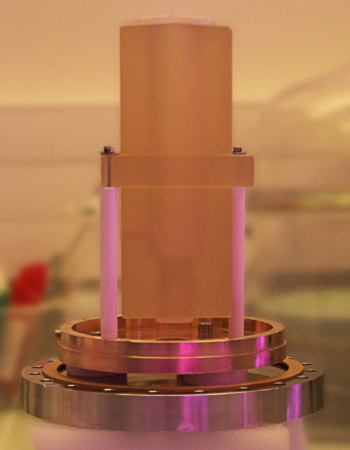Constraining the Climatic Signal Archived in Water Isotopes in Antarctic Ice Cores
Antarctica is a major component of the climatic system: the enormous amount of ice interacts with the atmosphere and the ocean and plays a determinant role in the radiative budget of the earth, the oceanic and the atmospheric circulations. In central Antarctica, the climate change signature in the short and sparse instrumental record is hidden below strong inter-annual variability. Fortunately, the isotopic composition stored in ice cores provides records of past climates both at short time scales (anthropogenic period), and at long time scales (glacial/interglacial cycles). This enables to put the present temperature variations of Antarctica in the context of the last millennia and to compare it with analogue situations from the past. Still, the interpretation of the water isotopic signal, especially at high temporal resolution, is limited by poorly understood post-deposition processes, which cannot be neglected on the East Antarctic Plateau.

This project focuses on understanding the archival of the climatic signal in the isotopic composition in the Dome C region, where the oldest ice records are available. The purpose is to improve the power to reconstruct past climate variations by understanding how climate variations are imprinted in the ice isotopic composition. This will be realised by identifying the sources of noise that hides the climatic signal in the ice isotopic composition, in particular stratigraphic noise, which is characterised by small (< 5m) decorrelation length, and precipitation intermittency noise, which is characterised by large (> 100km) decorrelation length. Relying both on a mechanistic approach based on year-long monitoring of the exchanges between vapour and ice, and statistical analysis of snow isotopic variability in a large dataset from all around Dome C, we will generalise the process understanding into an understanding of water isotopes as climate proxy. The work builds on the most advanced techniques in infrared spectroscopy, advanced statistical techniques and collaborations with other institutes through direct interactions and field work. It will enable major improvements in understanding the processes that set the ice core isotopic signals.
Demodulation of the East Antarctic Plateau Isotopic Composition Evolution
Currently, I am studying the processes involved in the formation of the snow isotopic signal on the East Antarctic Plateau. This lead to two campaigns at the station Concordia (Dome C, Antarctica) during which the vapour isotopic composition was monitored during a month. Indeed, on the East Antarctic Plateau, the snow isotopic composition integrates the fractionation at each step of the water cycle, from the evaporation in the subtropical areas to the exchanges between the snow and the vapour after the deposition on the ice sheet.
Some of the first results can be found here:
The research leading to these results has received funding from the European Research Council under the European Union’s Seventh Framework Programme (FP7/2007- 2013)/RC grant agreement number 306045, and from the Alexander Von Humboldt foundation, grant DEAPICE.
Pushing the limits of infrared spectroscopy
 Monitoring water vapour isotopic composition in remote Polar Regions is
complicated by the low humidity levels. In winter at Dome C, temperature
drops down to -80°C and humidity down to 1 ppmv. Current commercial
instruments are not able to operate at this low isotopic composition. In
order to push the detection limits of infrared spectrometers, I have
been participating to the development of a new infrared spectrometer for
water vapour isotopic composition based on OFFS-CRDS (Optical
Feedback Frequency Stabilisation Cavity Ring Down Spectroscopy).
Monitoring water vapour isotopic composition in remote Polar Regions is
complicated by the low humidity levels. In winter at Dome C, temperature
drops down to -80°C and humidity down to 1 ppmv. Current commercial
instruments are not able to operate at this low isotopic composition. In
order to push the detection limits of infrared spectrometers, I have
been participating to the development of a new infrared spectrometer for
water vapour isotopic composition based on OFFS-CRDS (Optical
Feedback Frequency Stabilisation Cavity Ring Down Spectroscopy).
Some of the first results can be found here:
Archival of the climatic signal in the snow isotopic composition
By combining measurements of water vapour, surface snow and buried snow from all around East Antarctic Plateau, I have been evaluating the different processes contributing during the archival of the climatic signal in the snow isotopic composition. The different dataset reveals that the post-deposition processes have a significant impact on the snow isotopic composition, in particular, exchanges with the vapour leading to large differences of seasonal cycle between the precipitation and the surface snow isotopic composition.
Laboratory studies of the water isotope fractionation.
Infrared spectroscopy has open new possibilities in processes studies of fractionation of water isotopes. I have been exploring the impact of diffusion-lead kinetic fractionation in a cloud chamber experiments and the results are available here.The determination of the fractionation coefficients associated with the phase transition vapour to ice is limited at low temperature. I have been developing a new experimental setup able to evaluate these coefficients in a laboratory setup.